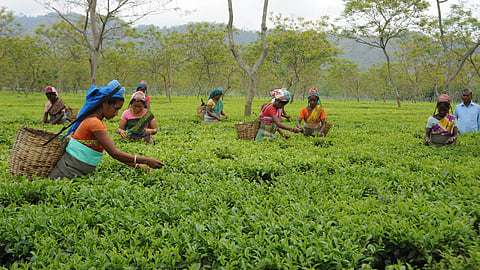Tea industry goes for quality over quantity
The Indian tea industry has not only grown but also undergone substantial changes over the years. It has faced several challenges due to climate changes, declining soil fertility, old plantations and a stagnation in yield levels.
FY21 was reasonably good for the tea industry as there was a sharp surge in prices due to a steep decline in production since 2020. However, next year is likely to be challenging for the industry. ‘Tea Industry at the cross roads’ a report jointly released by ASSOCHAM East and ICRA also cautioned the industry about a tough year ahead.
Owing to the sharp wage hike of Rs26 (from Rs176 to Rs202 per day) early this year and input cost escalations, the cost of tea production rose significantly. Also, production has now returned to normal levels and this has narrowed the demand-supply situation, leading to a decline in tea prices from June this year.
“The situation is grim. The current cost of production leaves the industry in distress. We do not see light at the end of the tunnel,” says Rohit Lohia, director of Chamong Tea – a large tea producer in Darjeeling. He explains the government should hold hands with the industry and support it through various schemes. The reduction of Remission of Duties and Taxes on Export from 5 per cent to 1 per cent is inadequate given the uncertainty in the export markets. Incidentally, the Tea Board has stopped several subsidies and expects the tea industry to stand on its own feet.
The ASSOCHAM and ICRA report suggests that, for the long-term sustainability of the industry, tea prices must consistently remain materially higher than the cost of production. The industry should undertake several measures to ensure profitability of bulk tea players on a sustainable basis. This would include ramping up exports not just to traditional markets but some potential ones.
The changing dynamics mean the industry should adopt innovative technology strategies for cost effective quality tea production. These are more likely to affect average quality manufacturers, rather than quality tea producers.
The Tea Association of India earlier urged the Union Government to regulate the demand supply chain by curbing the import of tea in India. Imported tea creates additional pressure on the demand supply equilibrium in the domestic market. The status of tea in Darjeeling is acute. Tea imports from Nepal rose to 50 per cent in June this year. This influx is a major concern. Nepalese tea is 50 per cent cheaper than Darjeeling and is often passed off as Darjeeling tea in the domestic and export markets.
India is the second largest tea producer in the world after China. It currently produces 1,280 million kg of tea. The industry plays a key role in the livelihood of millions. But the country’s per capita consumption remained stagnant at a low 830 grams whereas countries like Turkey, Ireland and the UK drink a lot more. The pressing need of the hour is that the industry should work aggressively, along with the government, to promote tea in the country and also explore new export markets.

